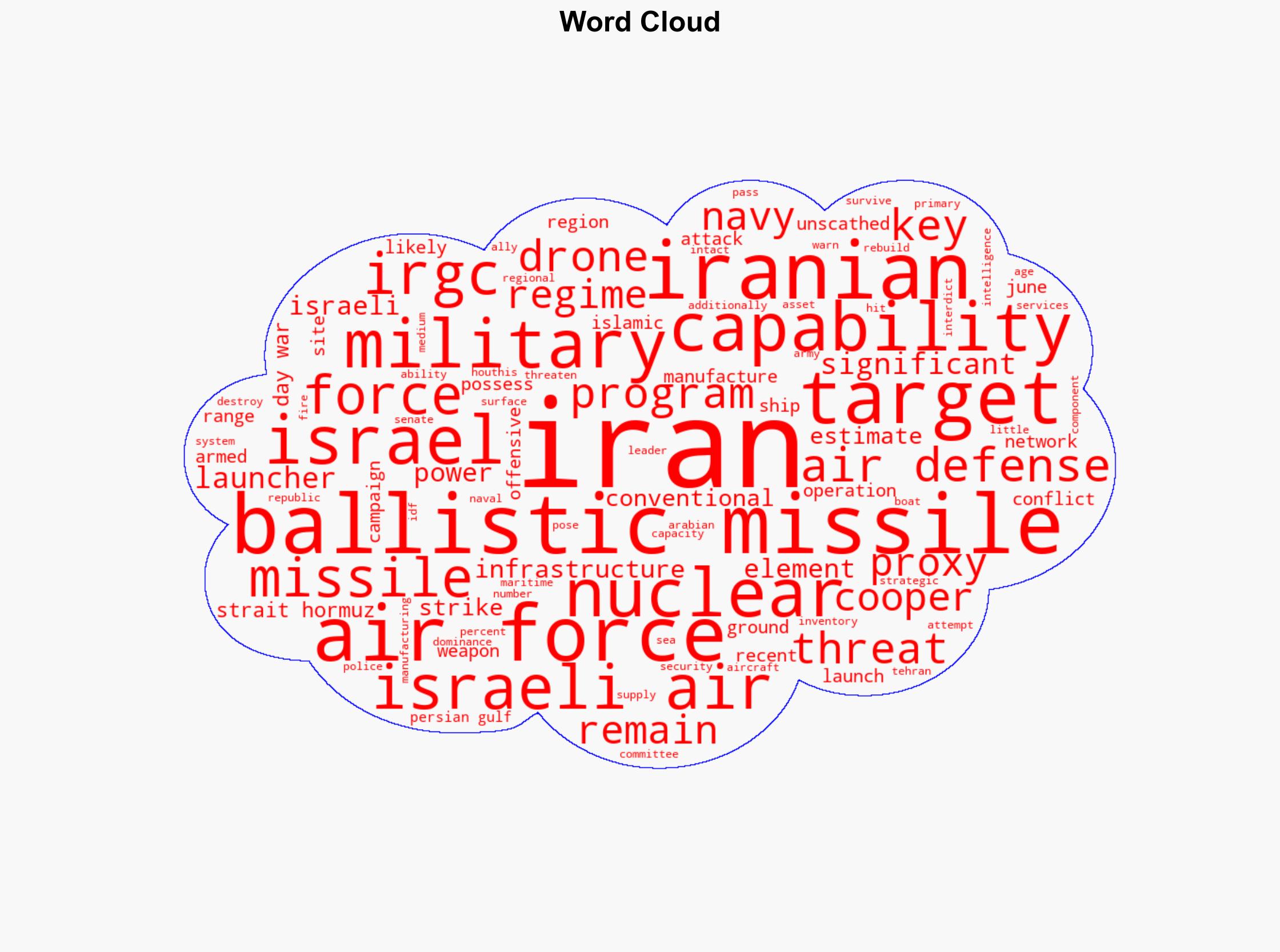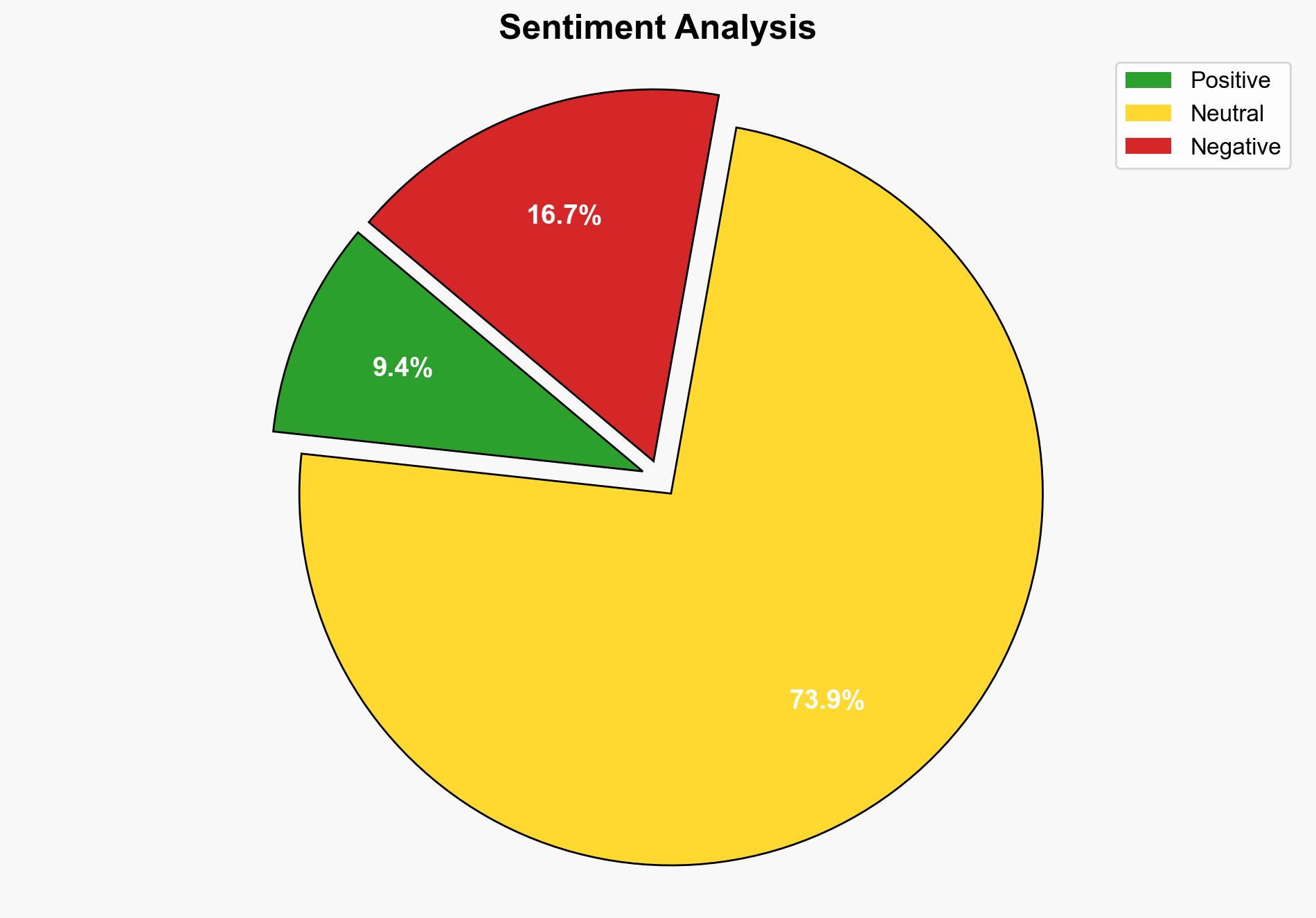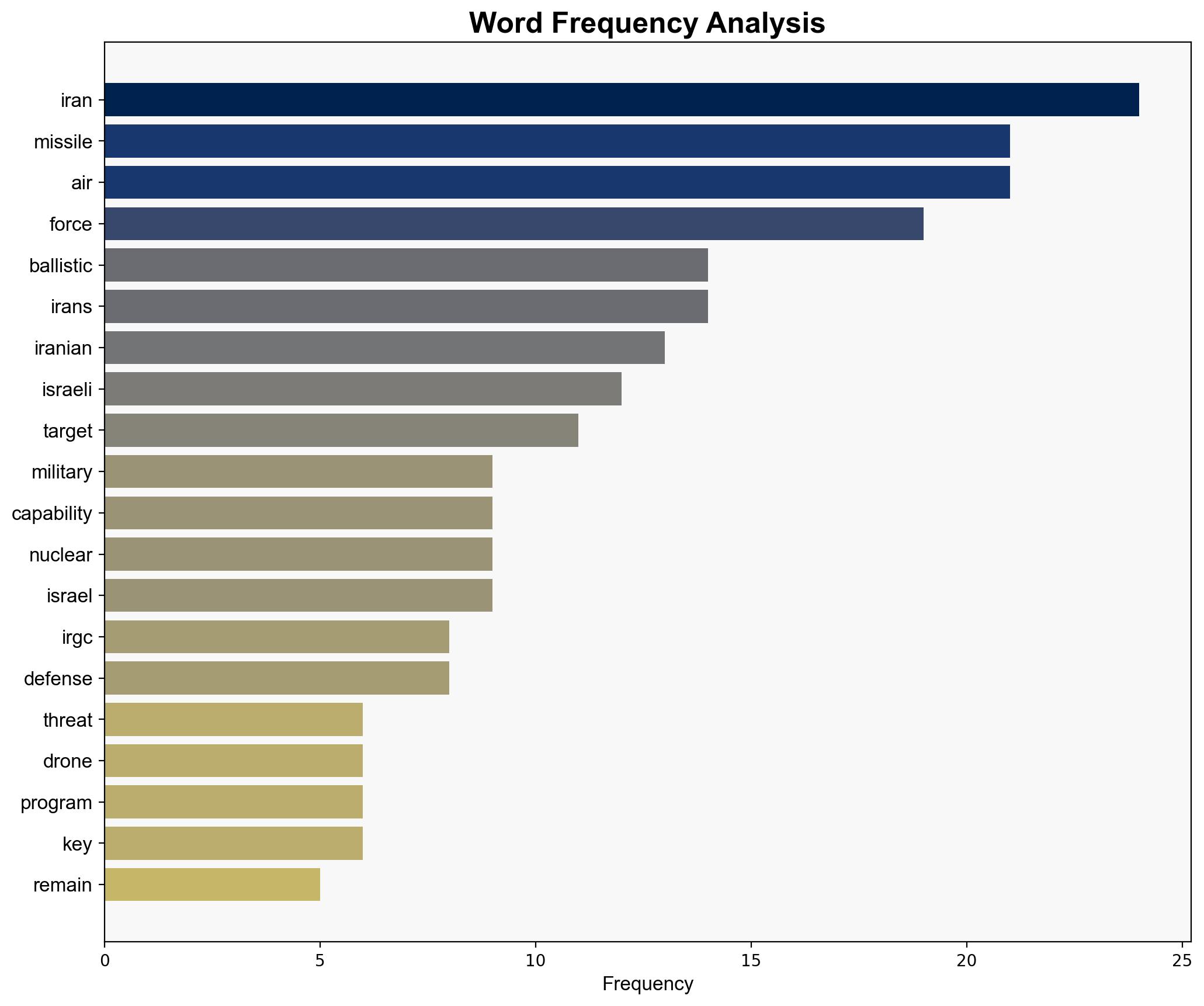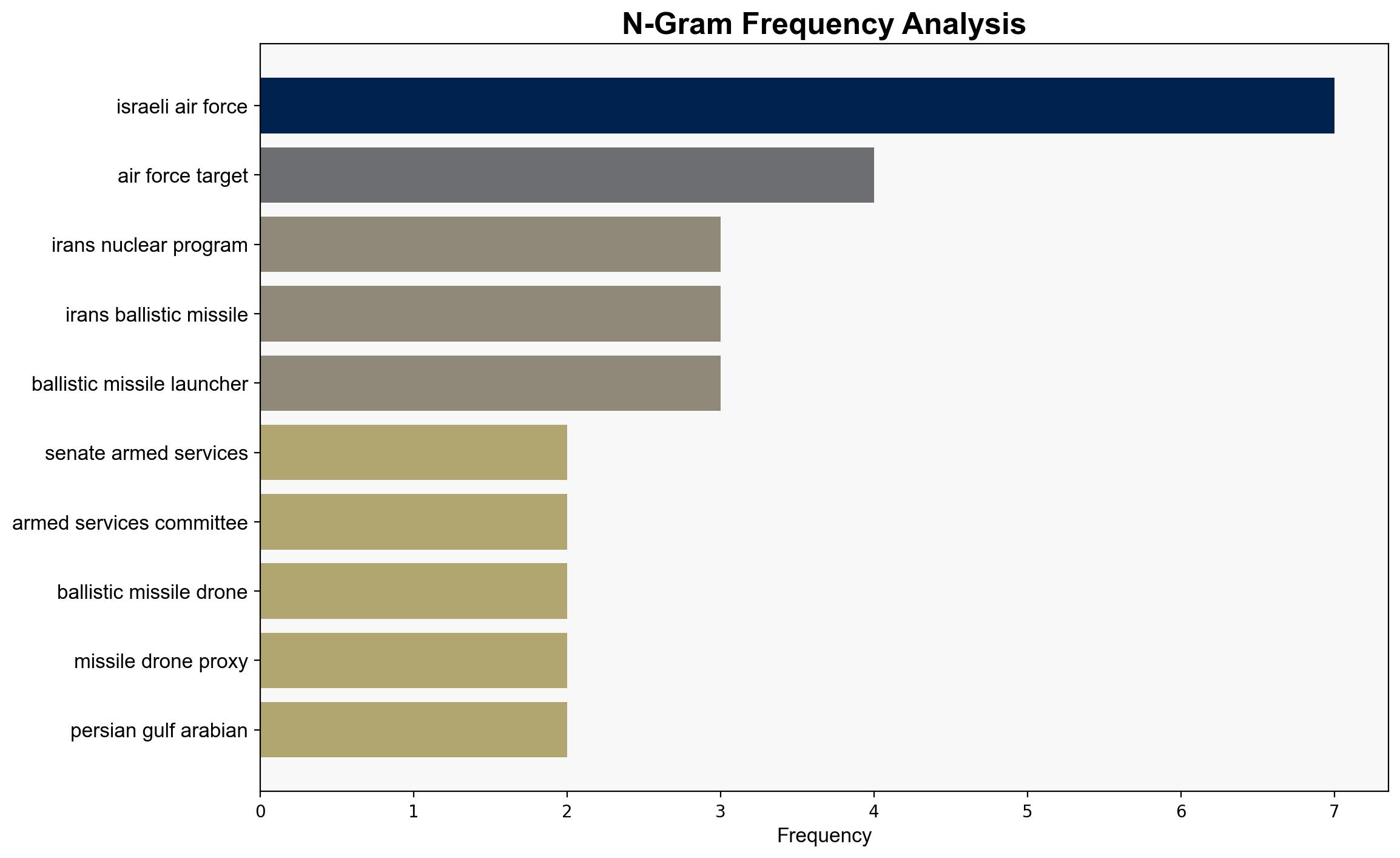Analysis Iran is severely weakened but remains a regional threat – Longwarjournal.org
Published on: 2025-06-28
Intelligence Report: Analysis Iran is Severely Weakened but Remains a Regional Threat – Longwarjournal.org
1. BLUF (Bottom Line Up Front)
Iran, despite recent military setbacks, continues to pose a significant regional threat due to its advanced ballistic missile capabilities, extensive proxy networks, and strategic geographic positioning. The potential for Iran to acquire nuclear weapons remains a critical concern, with implications for regional stability and global security. Strategic recommendations include enhancing regional defense collaborations and monitoring Iran’s military developments closely.
2. Detailed Analysis
The following structured analytic techniques have been applied to ensure methodological consistency:
Causal Layered Analysis (CLA)
Surface events include recent Israeli military operations targeting Iran’s missile capabilities. Systemic structures involve Iran’s use of proxies and ballistic missiles as tools of regional influence. The prevailing worldview is one of Iran as a persistent threat, while underlying myths center on its perceived regional dominance.
Cross-Impact Simulation
The interplay between Iran’s military actions and the responses of neighboring states, particularly Israel, could escalate tensions, impacting regional alliances and economic stability.
Scenario Generation
Scenarios range from Iran successfully rebuilding its military infrastructure, leading to renewed regional aggression, to increased international pressure resulting in diplomatic resolutions.
Network Influence Mapping
Iran’s influence is mapped through its proxy networks and strategic alliances, highlighting key actors and potential leverage points for diplomatic interventions.
3. Implications and Strategic Risks
The depletion of Iran’s missile stockpile presents a temporary reduction in immediate threat levels; however, the potential for rapid rearmament poses a long-term risk. The ongoing conflict could destabilize energy markets, particularly if Iran targets critical infrastructure like the Strait of Hormuz. Cyber threats and asymmetric warfare tactics remain viable concerns.
4. Recommendations and Outlook
- Enhance intelligence-sharing and defense coordination among regional allies to counter Iran’s proxy and missile threats.
- Implement economic sanctions targeting Iran’s military-industrial complex to hinder rearmament efforts.
- Scenario-based projections suggest that diplomatic engagement could mitigate risks, while failure to contain Iran’s nuclear ambitions could lead to a regional arms race.
5. Key Individuals and Entities
Charles Cooper II
6. Thematic Tags
national security threats, cybersecurity, counter-terrorism, regional focus




